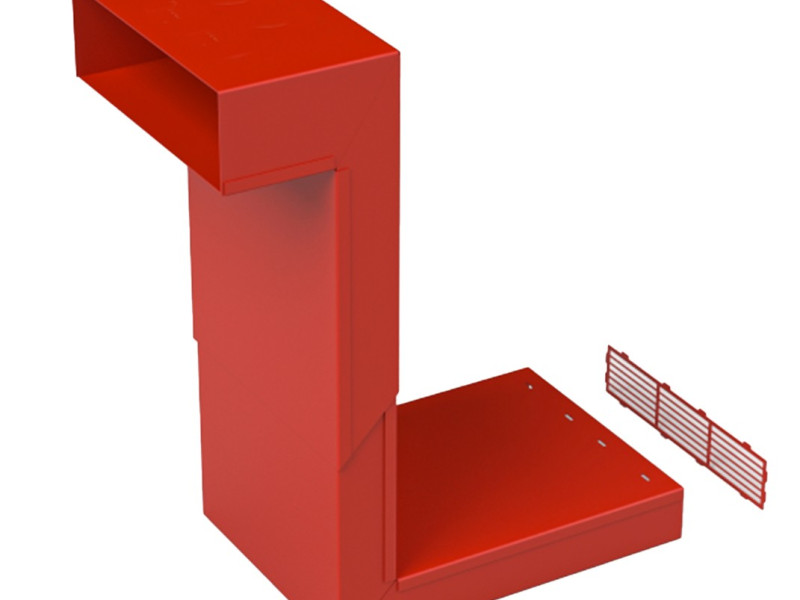A1 Fire Rated Telescopic Underfloor Ventilation

Features & Benefits
- Available in single or double airbrick versions
- To suit minimum 50mm cavity for walls up to 450mm
- Vertical telescopic to accommodate brick height options of 3-4, 4-7, or 7-10 brick course height
- Manufactured from corrosion resistant galvanised or Zinc coated steel painted with non-organic fused oven baked finish in red colour.
- Performance rated to A1 non-combustible BS EN13501-1:2009 suitable for ‘relevant buildings’ meeting Building Regulation 7(2) for external walls within building over 18m height
- High airflow design meeting Building regulation Part F with 90% free duct area
- Lightweight and easy to handle
- Durable and totally resistant to decay
- Suitable for new build or Retro-fit
- Special grille included to prevent entry of vermin
- Easy installation with interlocking components
Installation
- To be used in conjunction with ICON A1 noncombustible airbricks
- The airbrick and upper front of the telescopic underfloor ventilator must be positioned above the finished external ground level —usually at the same level as ground DPC
- The lower rear opening of the product must project down to the level of the underfloor void and must not be obstructed by the floor construction.
- Building regulations require a fee airflow below suspended ground floors of at least 1500mm2 per metre run of wall. However, such a wide spacing is not recommended as stagnant air pockets could form in the underfloor void. A spacing of not more than 2m centres is recommended and not more than 450mm from end of wall.
- Ventilators should be positioned down two opposite sides of the building to create a cross ventilation action. In complex designs or voids with dividing walls, it may be necessary to position around the full perimeter of the building.











